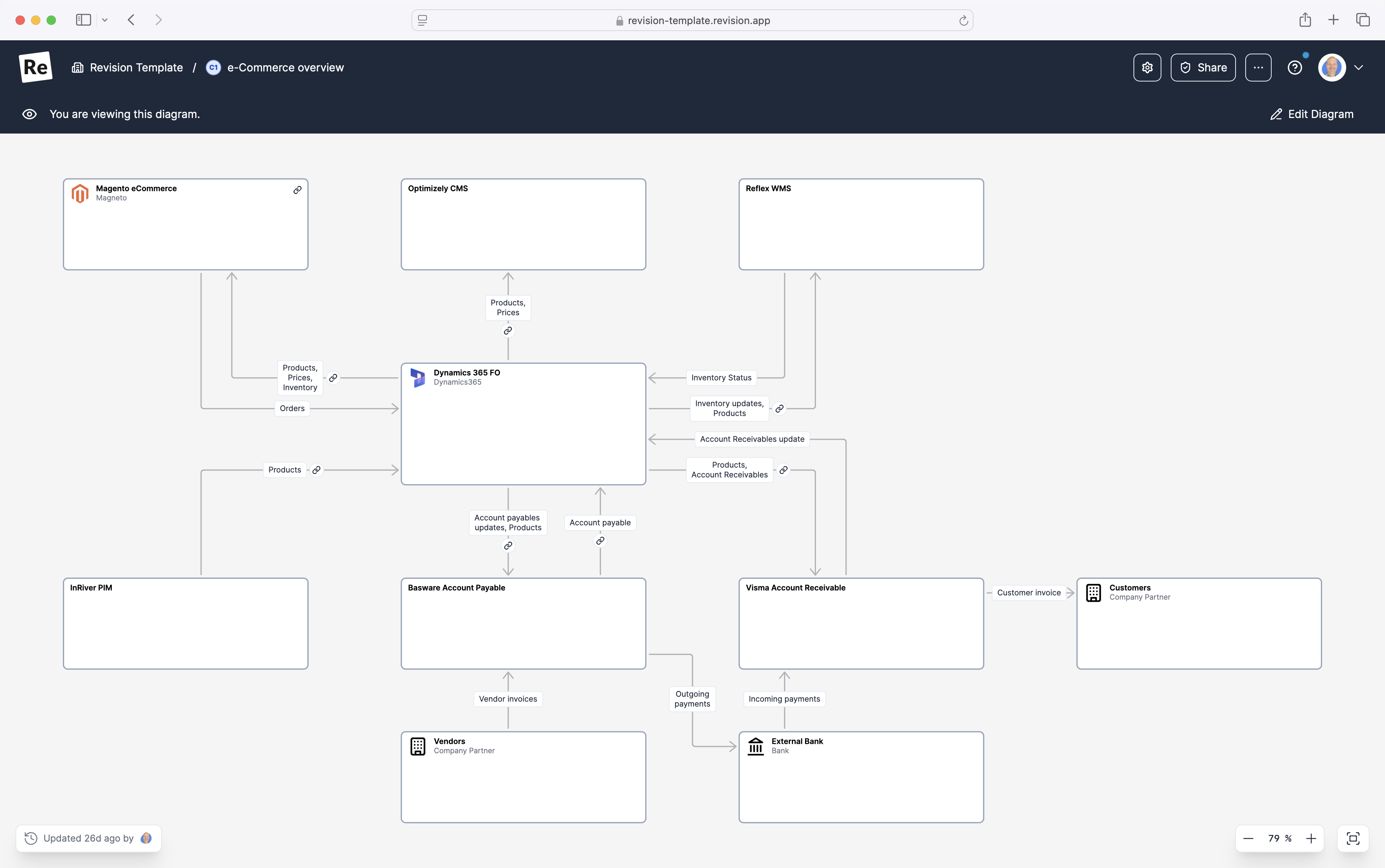What's Revision
The idea behind Revision is simple: we want to enable you to create shareable, easy-to-understand visual models of your architecture as easily as possible.
Revision is a system and software architecture diagram tool that helps teams create, share, and maintain documentation that actually gets used.

The Problem We Solve
Creating Good Diagrams is Hard
It's hard to describe complex relations such as system architectures! There are so many details and different roles need different types of information.
Traditional architecture documentation often fails teams because it:
- Wastes your team's time - Hours spent in Word, PowerPoint, Visio, Miro, and other tools that aren't built for architecture
- Becomes outdated quickly - Static documents that fall behind as systems evolve
- Lacks meaningful structure - Inconsistent formats that make information hard to find and trust
- Lives in silos - Documentation scattered across different tools and platforms
It's Easy to Try and Describe Too Much in One Diagram
When starting, your first impulse is probably to create one big diagram for everything! But too many details in one diagram create diagrams that are hard to understand for all stakeholders.
Information is Lost When Using "Dumb" Images
When using general drawing tools for describing your architecture, a lot of information is lost. Information about what components have relations to other components, which components contain other components etc can't be stored in images. For a general drawing tool, a box and an arrow is just that - making it impossible to gain further insights.
How Revision Helps
Revision transforms architecture documentation from a burden into a valuable, living resource by combining several key ideas:
-
Fast to Create - Build professional architecture diagrams in minutes, not days. Our purpose-built tools are designed specifically for system architecture, making documentation feel natural and efficient.
-
Easy to Maintain - Keep your documentation current with automated integrations that sync with your actual infrastructure. Connect to Azure, BizTalk, and other systems to automatically import and update components. All shapes in Revision are part of an underlying model - shapes are created once and reused in other diagrams.
-
Simple to Navigate - Organize your architecture using the C4 model - from high-level system context down to detailed component interactions. Revision has built-in features for linking components in one diagram to another, making it easy to navigate between abstractions and giving each stakeholder just the information they need.
-
Built for Teams - Share knowledge effectively with consistent, structured documentation that your entire team can contribute to and rely on. Avoid notation complexity by using just basic shapes - components, arrows and areas.
Key Features
Model-based Diagramming
Capture every component, relation, and data flow in a reusable model so diagrams stay consistent and in sync. Change a component once and see it update everywhere. See how the model works →
Diagram Hierarchies
Tell the full story with layered diagrams that match the C4-inspired levels in Revision. Link diagrams together so every role can zoom to the detail they need. Understand hierarchies →
Custom Component Metadata
Add structured metadata to your components for better organization and filtering. Use attributes to track ownership, versions, links, and anything else your team cares about. Discover metadata →
Integrations & API
Import or sync components from Azure, BizTalk, and other systems, then automate updates through the Revision API. Keep diagrams accurate by feeding the model directly from your tooling. View integrations → · Explore the API →